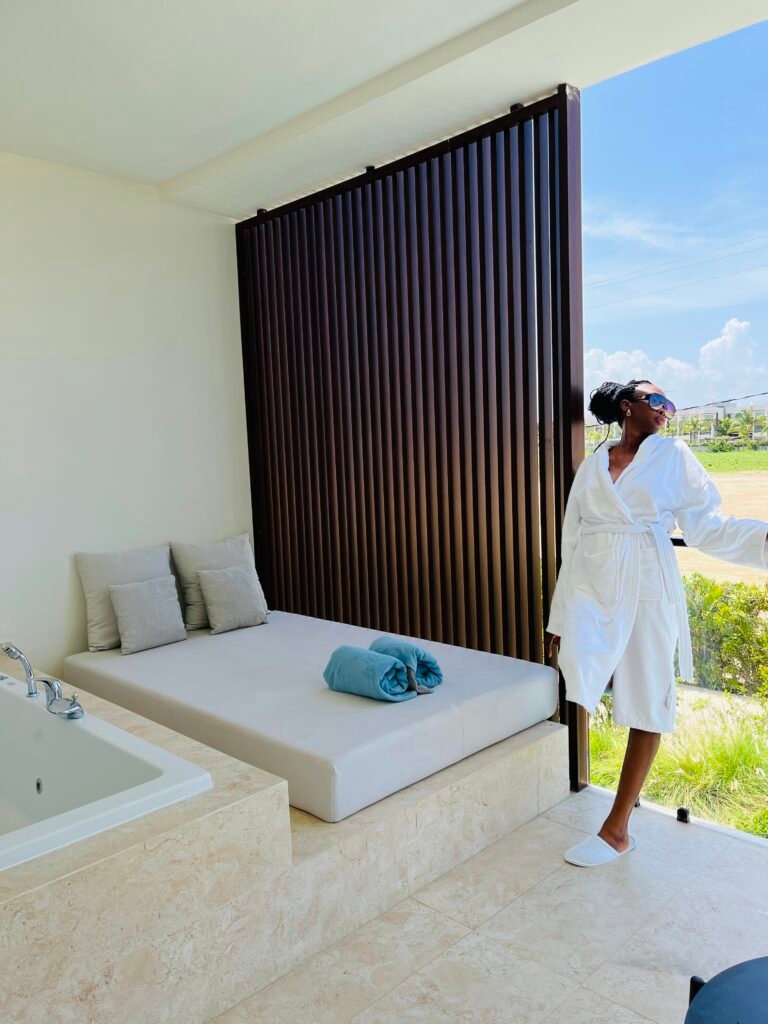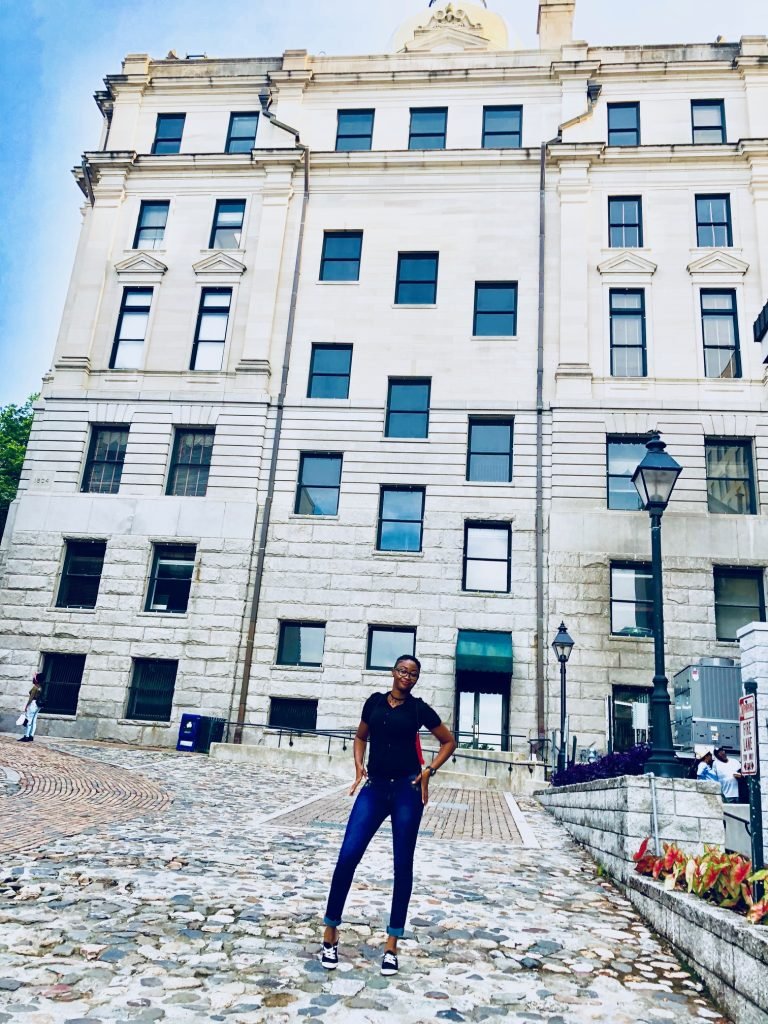The Maldives is an exquisite tropical paradise located in the Indian Ocean. It is composed of 26 coral atolls, which are made up of over 1,000 islands. Known for its stunning natural beauty, the Maldives offers pristine white sandy beaches, turquoise lagoons, and vibrant coral reefs teeming with marine life.
The Maldives is a popular destination for honeymooners, beach lovers, and diving enthusiasts. The islands are home to luxurious resorts, many of which feature overwater bungalows where guests can enjoy direct access to the crystal-clear waters. The underwater world of the Maldives is renowned for its breathtaking coral formations, colorful fish, and even encounters with gentle giants such as manta rays and whale sharks.
Besides sunbathing on the beaches and exploring the underwater wonders, visitors can engage in various activities. Snorkeling, scuba diving, and fishing trips are popular among tourists. Additionally, you can embark on a sunset cruise, go dolphin spotting, or simply indulge in rejuvenating spa treatments.
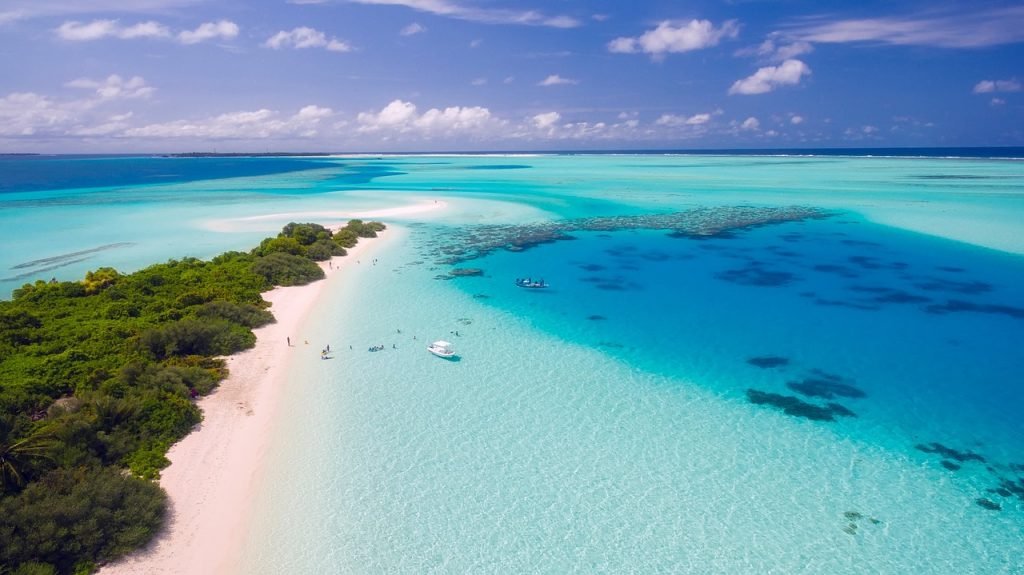
The Maldives also offers opportunities to immerse in the local culture and traditions. You can visit local islands to experience the Maldivian way of life, interact with friendly locals, and explore traditional handicrafts and cuisine.
The Maldives, officially known as the Republic of Maldives, is a tropical paradise located in the Indian Ocean. It is an archipelago consisting of 26 coral atolls, which are made up of more than 1,000 coral islands. The country is situated southwest of Sri Lanka and India.
With its tranquil ambiance, breathtaking landscapes, and unparalleled natural beauty, the Maldives truly lives up to its reputation as a tropical paradise.
Geographically, the Maldives is the smallest Asian country in both land area and population. Its total land area is approximately 298 square kilometers (115 square miles), and it has a population of around 400,000 people. The capital city and largest city of the Maldives is Male.
Here are some key points about the Maldives:
- Tourism: The Maldives is known worldwide for its stunning natural beauty, pristine white sandy beaches, crystal-clear turquoise waters, and abundant marine life. It is a popular tourist destination, particularly for honeymooners, beach lovers, and scuba diving enthusiasts. The tourism industry is a major contributor to the country’s economy.
- Climate: The Maldives has a tropical monsoon climate, characterized by two distinct seasons: a dry season (northeast monsoon) from November to April and a wet season (southwest monsoon) from May to October. The average temperature ranges from 24°C (75°F) to 33°C (91°F) throughout the year.
- Language: Dhivehi is the official language of the Maldives. English is widely spoken, especially in tourist areas.
- Religion: Islam is the official religion of the Maldives, and it plays a significant role in the daily lives of the people. The practice of any other religion is restricted to non-Maldivians.
- Government: The Maldives is a presidential republic. The President is the head of state and government and is elected by popular vote for a five-year term.
- Biodiversity: The Maldives is home to a diverse marine ecosystem with vibrant coral reefs, colorful fish, turtles, dolphins, and even whale sharks. The country is committed to environmental conservation and is known for its efforts to protect its natural resources.
- Threat of Climate Change: The Maldives is one of the countries most vulnerable to the effects of climate change, particularly rising sea levels. The highest point in the country is only about 2.4 meters (8 feet) above sea level, making it susceptible to the impacts of global warming.
- Underwater Tourism: The Maldives offers world-class diving and snorkeling opportunities. Many resorts have their own house reefs, and there are numerous dive sites where visitors can explore shipwrecks, and vibrant coral gardens, and encounter a rich diversity of marine life.
- Accommodation: The Maldives is famous for its luxury resorts and over-water bungalows, which provide visitors with breathtaking views of the ocean. These resorts often offer private pools, direct access to the sea, and various water activities.
- Local Culture: The Maldivian culture is influenced by South Indian, Sinhalese, and Arab traditions. Bodu Beru, a traditional drumming and dancing performance, is a popular form of entertainment. The country is also known for its intricate craftsmanship, including lacquer work, mat weaving, and coral stone carving.
It’s important to note that this information represents a general overview of the Maldives, and there is much more to explore and learn about this captivating destination.
Early History of Maldives
The early history of the Maldives is shrouded in mystery and lacks precise historical records. The islands have been inhabited for thousands of years, and the earliest settlers are believed to have arrived from various parts of the Indian subcontinent and Southeast Asia.
The Maldives has a rich maritime heritage, and the islands served as an important trading hub in the Indian Ocean. Ancient trading routes brought visitors from neighboring countries such as India, Sri Lanka, Persia (now Iran), and Arabia. The Maldivian people engaged in trade, fishing, and agriculture to sustain their livelihoods.
In the 12th century, Islam was introduced to the Maldives, marking a significant turning point in the history and culture of the islands. Islamic scholars and traders played a key role in spreading the religion, and Islam eventually became the dominant faith, shaping the customs, laws, and traditions of the Maldivian society.
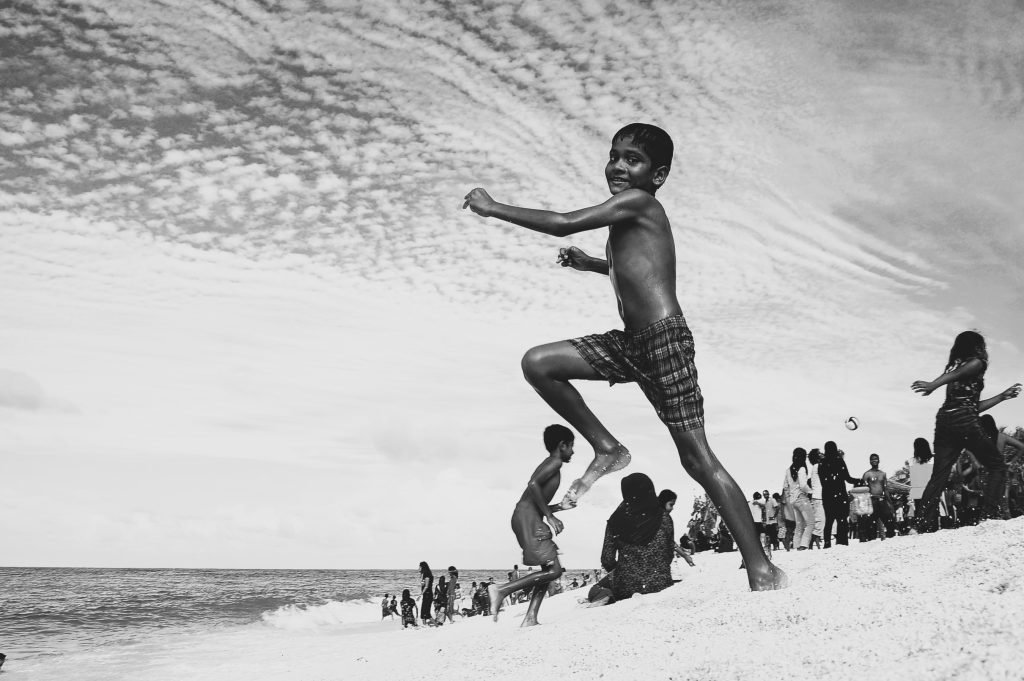
Throughout its history, the Maldives was ruled by various sultanates and dynasties. The power and influence of these rulers fluctuated over time, and the islands often faced external threats and interventions from foreign powers. The Maldives had occasional interactions with European powers, including the Portuguese, Dutch, and British, who sought to establish control over the lucrative trade routes in the Indian Ocean.
In the 19th century, the Maldives became a British protectorate, which lasted until 1965 when the country gained full independence. Following independence, the Maldives experienced a period of political instability, including several coup attempts and changes in leadership.
In 1978, Maumoon Abdul Gayoom became the president of the Maldives and remained in power for three decades. Under his rule, the country saw economic development and modernization, particularly in the tourism sector. The Maldives opened up to international tourism, transforming it into a major industry and driving significant economic growth.
In recent years, the Maldives has faced challenges related to climate change and rising sea levels. The government has been actively involved in advocating for environmental conservation and sustainable development, as the future of the islands is threatened by the potential loss of land due to global warming.
Today, the Maldives is known worldwide as a luxurious tropical destination, offering visitors a chance to experience the beauty of its pristine beaches, vibrant marine life, and luxurious resorts. The country continues to evolve and adapt, balancing its traditional culture and natural heritage with the demands of modern development and tourism.
Tribes That Make Up The Maldives
The population of the Maldives is predominantly composed of a single ethnic group called the Maldivians or Dhivehin. They are of mixed South Asian, Arab, and African descent. The Maldivian society is generally homogeneous, with a common culture and language.
While the Maldives does not have distinct tribes in the traditional sense, there are some regional and familial affiliations that have historical and cultural significance. These affiliations are known as “geographical identities” and are based on the historical division of the country into administrative regions. These regions are:
Malé: This is the capital city and the most populous region of the Maldives. The people from Malé and its surrounding areas are referred to as Malé people or Kaafu people.
Addu: Located in the southernmost atoll of the Maldives, Addu City, and the nearby islands form an administrative region known as Addu Atoll. The people from this region are called Adduans.
Haa Alifu, Haa Dhaalu, Shaviyani, and Noonu: These regions are located in the northern part of the Maldives. The people from these regions may identify themselves based on their respective atolls, such as Haa Alif, Haa Dhaalu, Shaviyani, and Noonu people.
Baa, Raa, Lhaviyani, and Alifu Alifu: These regions are located in the central part of the Maldives. People from these regions may identify themselves based on their respective atolls, such as Baa people, Raa people, Lhaviyani people, and Alifu Alifu people.
These geographical identities often play a role in cultural practices, traditional customs, and social relationships within Maldivian society. However, it is important to note that these identities do not represent separate tribes with distinct languages, customs, or ethnic differences. The Maldivians share a common language, culture, and national identity, and geographical identities primarily serve as a way to identify one’s roots or ancestral connections within the country.
Maldives’ Economical Growth Since 1993
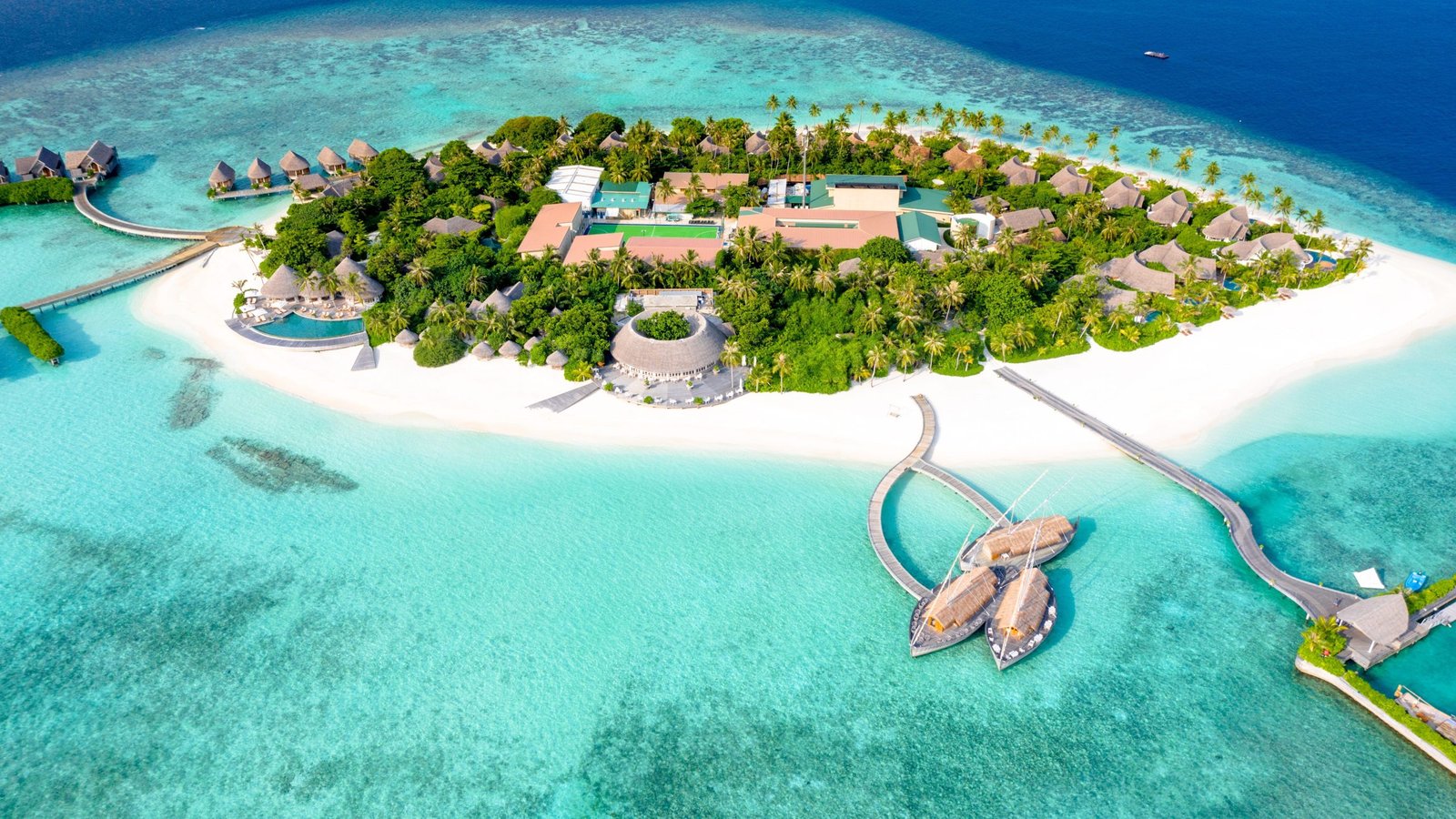
The Maldives has experienced significant economic growth since 1993. During this period, the country has undergone a transformation from a relatively low-income economy heavily dependent on fisheries and agriculture to a middle-income economy driven by tourism and services. Here are some key highlights of the Maldives’ economic growth since 1993:
- Tourism Boom: The tourism sector has been the main driver of economic growth in the Maldives. The government implemented policies to attract foreign investment and develop world-class resorts and infrastructure. The number of tourist arrivals has increased steadily over the years, with tourists drawn to the Maldives’ natural beauty, pristine beaches, and abundant marine life.
- GDP Growth: The Maldives has consistently achieved high GDP growth rates since the 1990s. From 1993 to 2019, the average annual GDP growth rate was around 7.7%. This robust growth has been primarily fueled by the tourism sector, which has contributed significantly to the country’s foreign exchange earnings and employment generation.
- Diversification of Economy: While tourism remains the dominant sector, efforts have been made to diversify the Maldivian economy. The government has focused on developing other sectors such as fisheries, agriculture, manufacturing, and services. Initiatives to promote local industries, such as the production of bottled water, packaged food, and handicrafts, have been undertaken to reduce dependence on imports.
- Infrastructure Development: Significant investments have been made in infrastructure development, including the expansion and modernization of airports, seaports, and transportation networks. These developments have facilitated better connectivity and enhanced the tourism industry’s capacity to handle increasing visitor arrivals.
- Human Development: The Maldives has made significant progress in human development indicators, such as education and healthcare. The country has achieved high literacy rates and has invested in improving access to quality education and healthcare services for its population.
- Poverty Reduction: Economic growth in the Maldives has contributed to poverty reduction. The government has implemented social welfare programs and initiatives to address income inequality and provide support to vulnerable populations.
- Environmental Sustainability: The Maldives has recognized the importance of sustainable development, given its vulnerability to climate change and rising sea levels. The government has taken steps to promote environmentally friendly practices in the tourism sector, such as coral reef conservation and waste management.
- Challenges and Vulnerabilities: Despite the positive economic growth, the Maldives faces challenges and vulnerabilities. The country is highly dependent on tourism, making it susceptible to external shocks, such as global economic downturns and geopolitical tensions. Climate change and rising sea levels pose long-term threats to the country’s existence, requiring ongoing efforts to adapt and mitigate their impacts.
Overall, the Maldives has experienced significant economic growth over the past three decades, primarily driven by the tourism sector. The government’s focus on diversification, infrastructure development, and social welfare programs has contributed to improving living standards and reducing poverty. However, challenges related to sustainability and economic diversification remain important considerations for the country’s long-term development.
Tourism In The Maldives Today without points
Tourism in the Maldives today continues to thrive as one of the country’s main economic pillars. With its stunning natural beauty and luxurious resorts, the Maldives attracts visitors from around the world seeking a tropical paradise experience.
The Maldives offers a range of accommodation options, from private island resorts to overwater bungalows, ensuring that travelers can find their ideal escape. These resorts often feature world-class amenities, including spas, fine dining restaurants, and water sports facilities, providing guests with a luxurious and indulgent stay.
The country’s pristine white sandy beaches, turquoise waters, and vibrant coral reefs are a haven for sun-seekers and water enthusiasts. Snorkeling and scuba diving are particularly popular activities, allowing visitors to explore the rich marine biodiversity, including colorful fish, turtles, and even manta rays and whale sharks.
In recent years, the Maldives has also been focusing on sustainable tourism practices. Many resorts have implemented eco-friendly initiatives to protect the fragile marine ecosystem and reduce their environmental impact. This includes measures such as coral reef conservation programs, waste management systems, and the use of renewable energy sources.
To facilitate travel to the Maldives, the country has an extensive network of international airports and domestic seaplane services that connect visitors to their desired destinations. The Maldives also offers visa-free or visa-on-arrival access to travelers from many countries, making it relatively convenient for tourists to visit.

It’s worth noting that the COVID-19 pandemic has had an impact on tourism in the Maldives, as it has globally. The government has implemented health and safety measures to ensure the well-being of both tourists and local residents. These measures include mandatory PCR testing, health declaration forms, and enhanced sanitization protocols.
Overall, the Maldives continues to enchant travelers with its unparalleled natural beauty and luxurious offerings. As tourism in the country evolves, the Maldives strives to provide unforgettable experiences while prioritizing sustainability and the preservation of its unique environment.
Events you can go to the Maldives for
The Maldives is not only a popular destination for its natural beauty but also for its special events and festivities. Here are a few notable events that you can attend in the Maldives:
- Maldives Independence Day (July 26th): This national holiday celebrates the Maldives’ independence from British rule in 1965. Festivities include parades, cultural performances, traditional music, and fireworks displays.
- Maldives Whale Shark Festival: Held annually in August on the island of South Ari Atoll, this festival celebrates the conservation of whale sharks and raises awareness about marine biodiversity. It features live music, dance performances, art exhibitions, and educational activities.
- Ramadan: If you visit the Maldives during the Islamic holy month of Ramadan (which changes annually based on the lunar calendar), you can witness the vibrant traditions associated with fasting and breaking the fast. The capital city of Malé comes alive with colorful decorations, special food markets, and communal prayers.
- National Day (November 11th): This day commemorates the establishment of the first Maldivian republic in 1968. The celebrations include parades, cultural events, and performances showcasing the country’s heritage and traditions.
- Maldives Surfing Season: The Maldives is a renowned surfing destination, and avid surfers flock to the islands during the surf season, which typically runs from April to October. Various international surfing competitions are held during this time, attracting professional surfers from around the world.
- Eid al-Fitr: This Islamic festival marks the end of Ramadan and is celebrated with great enthusiasm in the Maldives. Festivities include special prayers, feasts, and family gatherings. It’s a joyous time to experience the local culture and traditions.
- Maldives Whale Submarine Festival: This unique festival takes place in December on the island of Malé. It offers visitors the opportunity to explore the underwater world of the Maldives through submarine rides, accompanied by festive music, entertainment, and cultural performances.
Please note that the availability of these events may vary from year to year, so it’s advisable to check the specific dates and details closer to your travel time. Additionally, it’s always a good idea to inquire about local customs and etiquette when participating in cultural or religious events to show respect and appreciation for the local traditions.
In conclusion, the Maldives remains a sought-after destination for travelers seeking a slice of paradise. Its pristine beaches, crystal-clear waters, and vibrant marine life continue to captivate visitors from around the globe. The country’s luxurious resorts and top-notch amenities ensure a truly indulgent and memorable experience.
While the COVID-19 pandemic has brought challenges to the tourism industry, the Maldives has adapted health and safety protocols to protect both tourists and locals. The commitment to sustainable tourism practices further highlights the Maldives’ dedication to preserving its natural wonders for future generations.
As you embark on your journey to the Maldives, prepare to be mesmerized by its breathtaking beauty, whether you’re lounging on a powdery beach, snorkeling through colorful coral reefs, or unwinding in an overwater bungalow. The Maldives offers a serene escape from the hustle and bustle of everyday life, inviting you to relax, rejuvenate, and create cherished memories.
So, pack your swimsuit, snorkel, and sense of adventure, and let the Maldives work its magic on you. Discover why this tropical paradise continues to be a favorite destination, reminding travelers that dreams of paradise can indeed become a reality in the enchanting Maldives.
Check out Best Culture and Natural Beauty Experience in Mauritius


